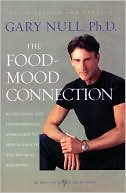Dave Johnson - Bill Clinton's Unreality -- Tinkering With Unpassable Ideas, when Transformation is What We Need
 November 30, 2011
November 30, 2011 By Dave Johnson, AlterNet
Posted on November 27, 2011, Printed on November 28, 2011
http://www.alternet.org/story/153191/bill_clinton%27s_unreality%3A_tinkering_with_unpassable_ideas%2C_when_transformation_is_what_we_need
Former President Bill Clinton’s new book, Back to Work: Why We Need Smart Government for a Strong Economy, is a book for policy wonks and politics junkies. Progressives will love his defense of government. They will be outraged by his buying in to conservative/Wall Street arguments about Social Security. We will roll our eyes at the long, detailed, brilliant arguments for and against a wide range of policy ideas. We will hate his support of trade agreements without mentioning what they have done to manufacturing jobs. And we will be sad that this book didn’t come out just a month later, so you could see if the Occupy movement changes the way he sees things.
This book is timely and full of good ideas for helping grow the economy and create jobs. But its timeliness is also disappointing, because our political system is so dysfunctional that none of these ideas will be implemented. And while the ideas are good, they are also incremental just when we are coming to see the need for transformation.
Right Time, Wrong Time
Back to Work arrives right on time with ideas to help the economy just as Washington “pivots to jobs” from a mistimed, destructive obsession with deficits. In fact, the book was completed so recently that it references the Republican debate audience cheering the “let him die” comment. But the book was completed just as the Occupy movement was beginning, and reading it in the prism of that movement makes it seem as if Clinton is just about ready to reach conclusions similar to those of the movement. Just about … but not quite.
The book is written in two parts. Part I looks at where we are as a country and as a people, our economic problems and our attitudes about government. Clinton responds to the right’s anti-government campaign and launches a strong defense of government. He talks about the country’s debt and where it came from. Finally he compares this to how things are doing in other countries. Part II offers a list of 46 policy proposals for reviving the economy, paying off debt and creating jobs, and in true Clinton style, it drills down into quite a bit of detail about how these proposals would work and the reasons they would help improve the economy.
Part I makes a good case for how well the country was doing before it was messed up by anti-government conservative policies. But many people think that part of today’s problems was Clinton's own incremental, “centrist” approach as president and his failure to see how this was enabling and empowering those very anti-government forces. By giving ground to those who give no ground, he enabled them to ratchet up their own power and propaganda advantage. This is why it was so easy for conservatives to quickly turn back the clock under Bush and to blame government for the collapse they themselves caused.
Social Security and Medicare
Clinton acknowledges the huge Social Security surplus, but he calls it “bonds not cash.” He sees the problem of paying off this obligation as a cash-flow deficit and treats it like that is Social Security’s problem. This is the typical Washington-centric elitist position, ignoring the vast human need.
In other words, if the problem of government finances is cash-flow, how do you reduce cash-flow needs? One way is if retirees weren’t getting so much cash. So solve this by forcing them to retire later, and get less per month by fiddling with the COLA. In other words, stiff the retirees.
In fairness to Clinton, he also explains how inequality has made the “cap” too low. As a solution to that, he writes,
"Some experts have suggested that a better, fairer way to raise more money is to impose a surcharge of 1 to 1.5 percent on all earnings above the cap for employers and employees."
But instead of addressing the real causes of the problems, Clinton offers the Erskine-Bowles plan to raise the retirement age to 69 and cut cost-of-living increases as a stealth way of cutting benefits!
On Medicare and healthcare in general Clinton outlines some details for “reform.” He points out that countries with a system like this spend so much less per capita, and quotes economist Paul Krugman, writing that “Medicare spending per person has increased 400 percent since 1970, while private insurance has skyrocketed 700 percent.” He makes the point that we have to solve the whole healthcare problem, and not just shift costs onto the non-government parts of the economy, as Republicans advocate. But, like so much else in this book, he just doesn’t quite get there and say that Medicare-For-All is the obvious answer.
Spending and Deficits
Clinton says the Bush tax cuts must expire. He says we should stop giving oil and other companies big tax breaks. “That would net about $3.5 trillion over a decade.”
On the Grover Norquist “no tax increases, ever” pledge, he offers good progressive language,
This makes sense if you think all government activity is harmful and the United States would do better with a philosophy grounded in “you’re on your own” rather than “we’re all in this together.”
To his credit, Clinton brings up and details the Progressive Caucus People’s Budget plan, saying it “takes care of older Americans and others who need help” and “invests a lot of our tax money to get America back in the future business.” This makes it “worth studying for possible changes and inclusion in a plan with more balance between spending restraint and new taxes.”
Clinton’s key objection to the People’s Budget is that progressives “don’t have the votes to pass their plan” – as if any positive suggestion to help the economy and unemployed could pass today. He also criticizes the People’s Budget because, “multinationals may be tempted to relocate,” and a financial-transactions tax “could either bring in a lot of money or lead to many high-dollar transactions now done in the United States being moved overseas, with a net loss in revenue from the taxable incomes on the people who do the transactions.” And he says the budget “doesn’t deal with the demographic challenges to Social Security and the health-inflation challenges of Medicare, Medicaid, and other government-funded health programs.”
Of course, he acknowledged elsewhere in the book that the real Medicare problem is our overall approach to healthcare not demographics, and that Social Security’s problem is rising inequality notdemographics.
Part II: The Ideas
Clinton offers 46 specific proposals and goes into detail why he thinks they would help the economy and create jobs. The major topics are deficit reduction, including a discussion of “entitlements,” energy initiatives and business incentives.
Clinton offers a three-part economic and jobs growth strategy:
(1) put as much of the $4 trillion now held in banks and corporate treasuries back into the economy as fast as we can; (2) concentrate on the areas most likely to produce good jobs that have a positive ripple effect, jobs in modern infrastructure building, high-end manufacturing, green technologies, and exported goods and services; and (3) do literally dozens of other things that, when combined, can make a real impact now and also increase our long-term economic growth.
The list is full of smaller policy ideas, like #3, the Federal Reserve has to give banks an incentive to lend. The Fed should charge banks for parking money, maybe .25% and/or require banks to pay their customers a minimum 1% interest on deposits.
Numbers 5 and 6 are controversial: Give corporations an incentive to bring jobs back to US by lowering tax rates to be competitive with other countries, and with Buy America procurement policies. And give companies that are holding cash outside the country a tax break to bring it back, but only if money is used to create jobs.
Energy
Ideas number 9-24 are all energy ideas offering various tax incentives, expand geothermal, biofuels, energy from garbage and retrofitting buildings to be energy efficient. All of these would perovide jobs and make our economy more efficient, while helping wean us off of oil and coal.
“THE SUREST WAY TO CREATE JOBS, cut costs, enhance national security, cut the trade deficit by up to 50 percent, and fight global warming is to change the way we produce and consume energy. Even though the climate change deniers seem to have succeeded in making their position a core tenet of antigovernment ideology, there is a case to be made on economics alone.”
Examples: Items 9 and 10, launch an aggressive, federal, fifty-state building retrofit initiative, making buildings energy-efficient. (States and localities should have their own retrofit initiatives.) Item 12, “At least paint the roofs white.” Item 24 is interesting: to speed up the process of bringing about energy independence, we should pick one or two U.S. states or territories and work to make them completely energy independent so they serve as learning labs and models for the rest of the country.
Trade
Clinton writes that “we need a national economic strategy. We have to change the incentives to make companies more willing to invest in making America more productive than in outsourcing more jobs.”
He offers several ideas for increasing exports. Progressive readers are, of course, interested in idea number 27 – trade agreements – and I’ll let him defend himself in his own words:
“Pass the pending trade agreements with South Korea, Colombia, and Panama. We don’t have a trade deficit in goods and services with the countries with which we have trade agreements. That’s because the negotiations are tough and thorough, designed to meet both sides’ needs, and supported by enforcement mechanisms. Our trade deficit is largely with the countries we buy oil from and the countries we borrow lots of money from, China and Japan.”
He follows that up with: Enforce trade laws. “We lost manufacturing jobs in every one of the eight years after I left office. One of the reasons is that enforcement of our trade laws dropped sharply.”
The Book’s Flaw: Incrementalist v. Transformational
Back to Work is a policy prescription full of ideas that could help the economy, but at its heart it has a flaw: it misunderstands the nature of the conservative movement’s decades-long attack on our very system of self-government. This leaves Clinton offering helpful policy ideas at a time when conservatives are blocking everything in the Congress that might do the country some good. And now, finally, the Occupy movement has come along, focusing attention on the real need for transformational rather than incremental change.
Clinton spends much of the book appealing to conservatives to support ideas like these for the good of the country, arguing in great detail how they would help the economy and create jobs. He does this at the very time when the strategy of the Republicans is to sabotage the economy by blocking ideas such as these from being implemented.
What Clinton misses is the extent to which today’s conservative movement is about remaking the country for the benefit of the 1% and no one else. They have an Ayn Randian vision of the wealthiest as “producers,” while the rest of us – the 99% – are what they call the “losers.” To them the 99% are “parasites” who deserve no help and will only become “dependent” from it. They believe that democracy is “collectivism” and is evil because majorities will use the “theft” of taxes on the “job creators” and “spend” it on infrastructure and education for the “leeches.”
Clinton SAYS it but he doesn’t SEE it. Clinton almost gets there, talking about the anti-government ideologues, saying their arguments are wrong, explaining why we need government, making the case, but never quite seeing that the destruction of government is intentional, not the result of a flaw in their ideology it is the point, that the right don’t believe in government because government helps people.
The CGI Origins
The ideas in the book flow from Clinton’s Clinton Global Initiative (CGI) process, which brings business, government and nonprofit leaders together to work on the world’s problems. Clinton writes about CGI being composed of “Democrats, Republicans, independents, and concerned citizens the world over” working together. He is trying to bring business, government and nonprofit leaders together to do good within a system that has been reengineered in recent decades to reward only greed. He has great technocratic faith in these educated meritocrats, and he has reason to – they are where they are because of their success, their hearts are in the right place, they want to help, and their success informs their approach to solving problems. But by nature successful – and mostly wealthy – stakeholders have an interest in preserving rather than transforming the system that brought them the wealth and control they have achieved. Because this system has been so good to his CGI crowd it is difficult for them to see the fundamental evil at its root.
As a result, the ideas of CGI and the book are stuck in technocratic incrementalism. His prescription offers incremental change, at exactly the time so many are finally realizing that we need need transformational, institutional change. The rise of the Occupy movement tells us that it is time to see it, and change it.
 Email Article |
Email Article | 



